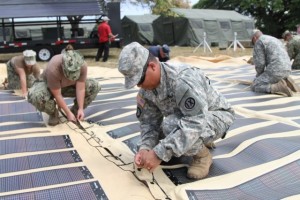Veterans’ Preference Hiring Program

By Debbie Gregory.
Veterans’ Preference gives those who are disabled, served on active duty in the Armed Forces during certain specified time periods or in military campaigns preference over others in hiring for virtually all federal government jobs for veterans. While veterans’ preference does not guarantee jobs for military veterans, it does show our nation’s gratitude by giving them a leg up.
Veterans’ Preference was enacted at the end of the Civil War to aid disabled veterans. It was greatly expanded after World War I, allowing able-bodied, honorably discharged veterans, widows of deceased veterans and wives of severely disabled ones to take advantage of the assistance. Under the Obama administration, federal agencies established hiring goals that has resulted in one-third of new federal hires being veterans.
The program works on a point system, with 100 being the highest score. Typically, applicants receive points by either taking a test or through an evaluation of their education and experience. Disabled veterans got extra 10 points added to that score, while other former soldiers received 5 points. In the case of a tie, veterans are placed ahead of non-veterans. In addition, veterans with more serious service-related disabilities are placed at the top of the list, as long as they achieved a passing grade of 70 points.
Hiring officials cannot pass over veterans in the top category to hire more qualified non-veterans.
Younger veterans born since 1980 are about 15 times more likely than non-veterans of the same age to hold federal jobs.
Veterans’ Preference is a powerful hiring tool that can help veterans reach the veteran employers of the federal workforce.
Although it only directly benefited about one-tenth of veterans in the past, nearly one-third of recent veterans have federal jobs, many more than would have them in the absence of preferential hiring.
Military Connection salutes and proudly serves veterans and service members in the Army, Navy, Air Force, Marines, Coast Guard, Guard and Reserve, and their families.


























